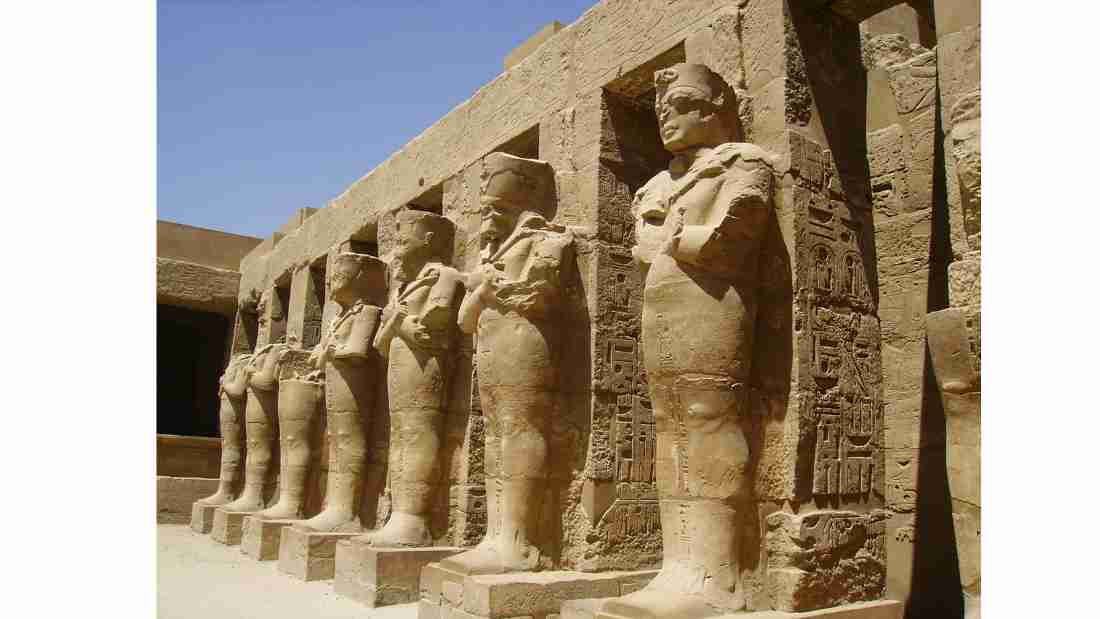The Nile River, a lifeline that snakes through the deserts of Egypt, gave rise to one of the most remarkable civilizations in human history. The ancient Egyptians, with their deep reverence for the divine, built awe-inspiring temples that served as spiritual centers and hubs of community life. These ancient Egyptian temples echo the grandeur of a civilization that believed in the power and influence of their deities in every aspect of life.
A Testament to Divine Worship
Every structure in ancient Egypt was designed with a purpose, and temples were no exception.
These majestic structures were not just places of worship but were considered the actual dwelling places of the gods and goddesses.
They were meticulously designed and constructed to ensure the comfort and pleasure of the deities they housed.
From the grand temple of Karnak dedicated to Amun-Ra, the king of the gods, to the beautiful temple of Hathor at Dendera, each temple was a testament to the deity it represented.
The intricate hieroglyphics adorning the walls narrated tales of divinity, mythology, and pharaohs’ devotion, serving as an enduring record of their religious beliefs.
Architectural Marvels
The ancient Egyptian temples were architectural marvels, showcasing the Egyptians’ advanced understanding of engineering and aesthetics. Built with sandstone or limestone, these structures have stood the test of time, resisting the harsh desert conditions and the ravages of time.
Despite their monumental size, the temples were designed with precise mathematical calculations. The alignment of the temples with celestial bodies, especially the sun, indicated the profound astronomical knowledge of the ancient Egyptians.
For instance, the Temple of Abu Simbel, dedicated to Ramses II, is designed such that twice a year, the sun’s rays penetrate its inner sanctuary to illuminate the statues within.
Centers of Economic and Social Life
Beyond their religious significance, ancient Egyptian temples were also centers of economic and social life. They owned vast tracts of land, managed agricultural production, and conducted trade.
The temples employed thousands of people in various roles, including priests, scribes, artisans, and laborers, making them significant contributors to the economy.
Temples also served as educational centers where scribes learned and honed their skills. The wisdom of the ancients was passed down through generations within the sacred precincts of these temples.
The Ancient Egyptian Temples of Karnak: A Monumental Tribute to the Gods
The Temple of Karnak, located in modern-day Luxor, is one of the most awe-inspiring structures of ancient Egyptian architecture.
It’s not just a single temple, but a vast complex of sanctuaries, pylons, chapels, and other buildings dedicated primarily to the Theban triad of Amun-Ra, his wife Mut, and their son Khonsu.
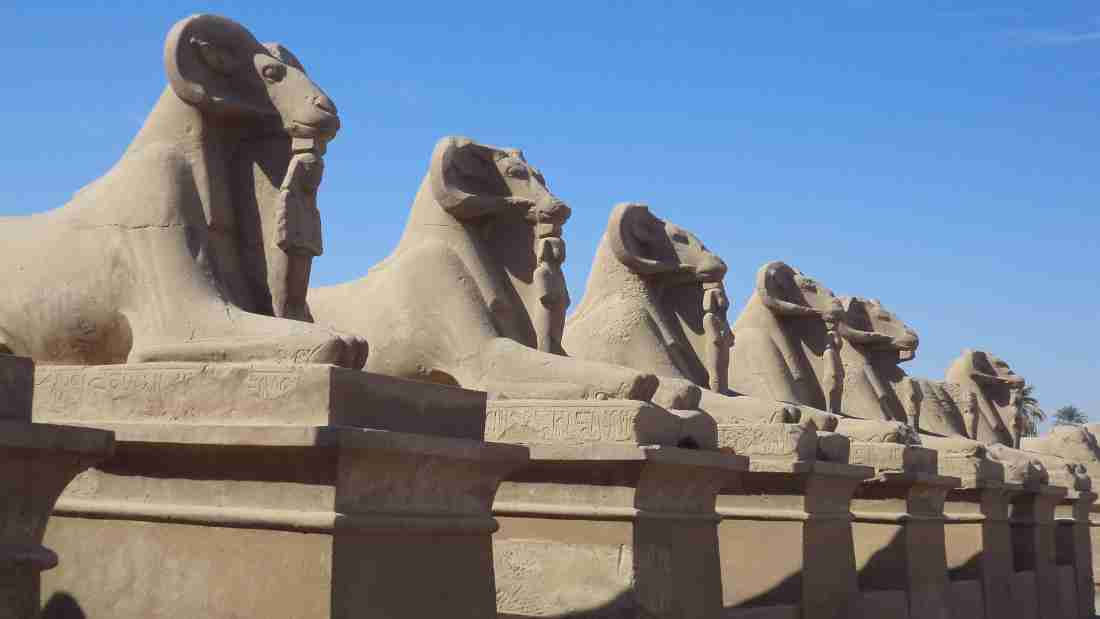
A Testament to Divine Grandeur
Spanning over 200 acres, the Temple of Karnak is the largest religious building ever constructed. This massive complex took about 2,000 years to build, with contributions from several pharaohs.
Its construction began during the Middle Kingdom (around 2000 BC) and continued through to the Ptolemaic period (30 BC), making it an architectural marvel that encompasses various rulers’ styles and preferences.
The most spectacular section of the temple complex is the Precinct of Amun-Ra.
At the heart of this precinct stands the Hypostyle Hall, an incredible forest of 134 colossal stone columns, some reaching heights of 70 feet.
The grandeur and scale of this hall are a testament to the divine status of Amun-Ra, the king of the gods.
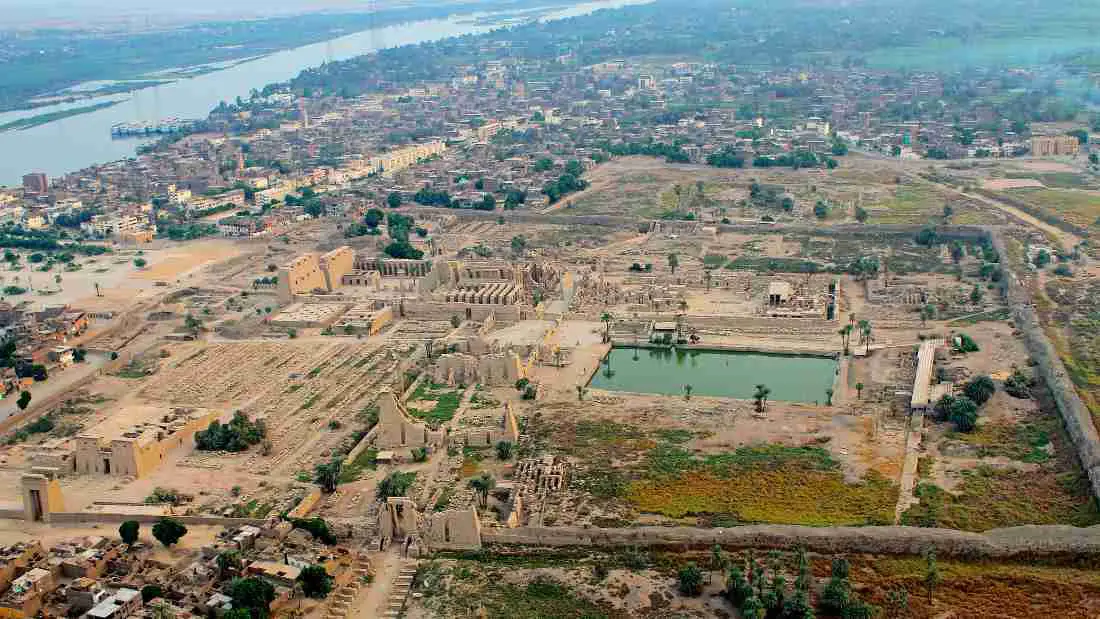
Hieroglyphics and Obelisks
One of the most famous features of the Karnak temple is the obelisks.
These towering structures, built to honor the pharaohs and the gods, are intricately carved with hieroglyphics. The tallest surviving obelisk at Karnak stands at a staggering height of 29 meters and is dedicated to Hatshepsut, one of the few female pharaohs of ancient Egypt.
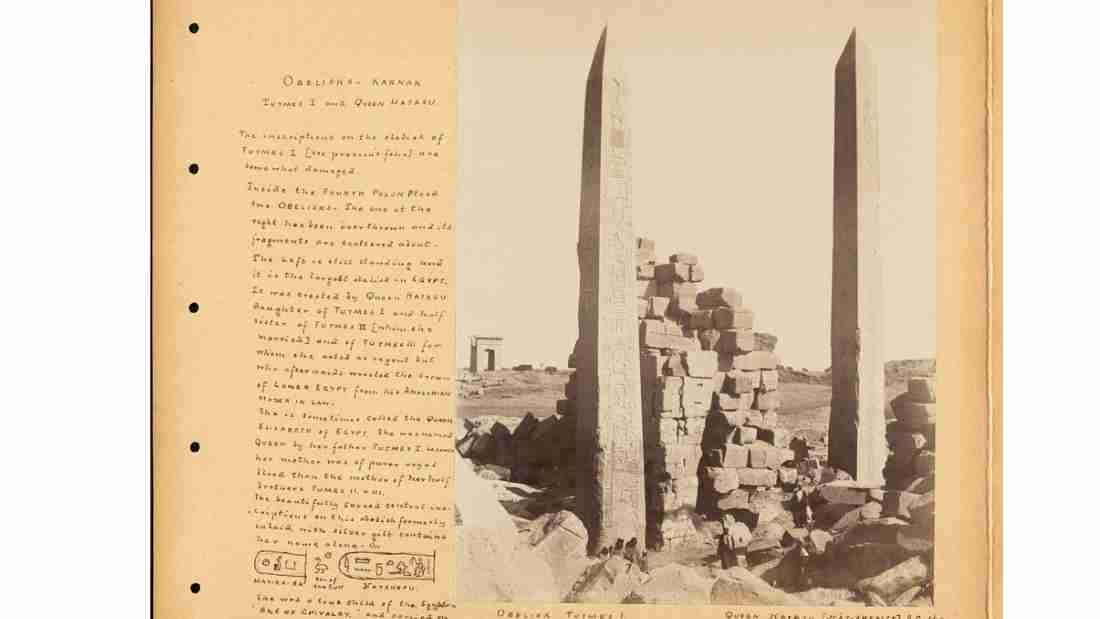
Rituals and Festivals
The Temple of Karnak was not just a place for daily rituals but also hosted grand festivals.
The most significant of these was the Opet Festival, a 27-day event where the statues of the Theban triad were carried in a ceremonial procession from the Karnak to the Luxor temple.
This festival was a time of jubilation and celebration, strengthening the bond between the gods and their worshippers.
Legacy of the Temple of Karnak
Today, the Temples of Karnak stands as a symbol of the grandeur of ancient Egyptian civilization.
Despite the ravages of time, the majesty of this complex of ancient Egyptian temples remains undiminished.
It continues to attract historians, archaeologists, and tourists from around the world, offering a glimpse into the religious fervor, architectural prowess, and the societal structure of the ancient Egyptians.
As we walk through the grand colonnades and gaze upon the hieroglyphic-covered obelisks, we are transported back in time, getting a taste of the spiritual life in ancient Egypt.
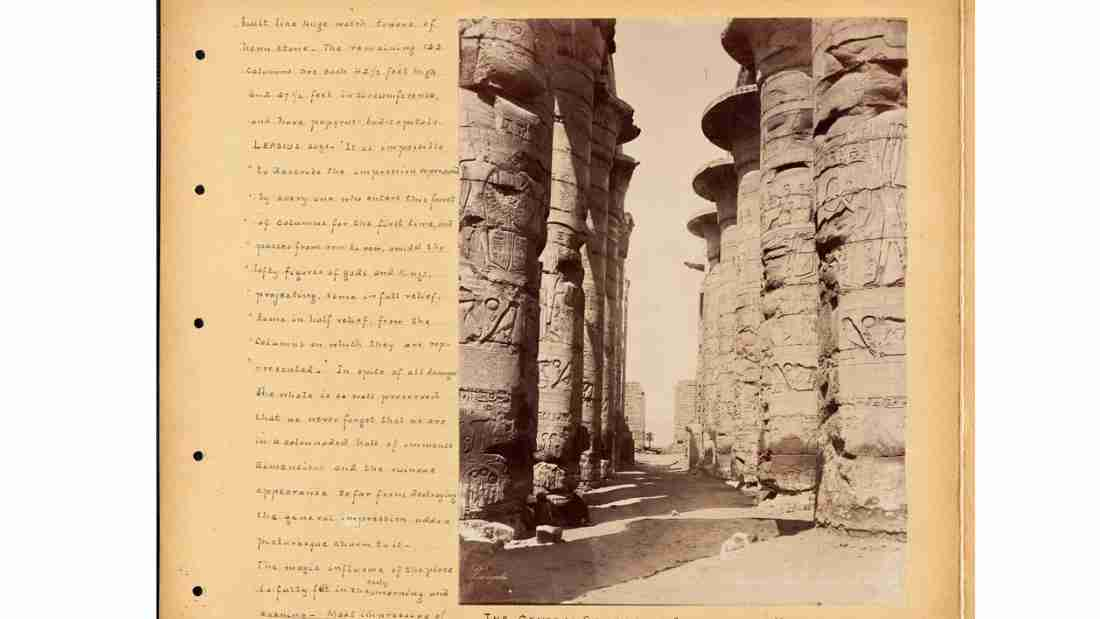
The Ancient Egyptian Temples of Abu Simbel: A Majestic Tribute to Ramses II
Nestled on the west bank of Lake Nasser, near the Sudanese border, the Temple of Abu Simbel stands as a testament to the grandeur and power of Ramses II, one of the most influential pharaohs of ancient Egypt.
It is a marvel of ancient engineering, renowned for its colossal statues and remarkable alignment with the sun.

An Architectural Masterpiece
The Temple of Abu Simbel is actually comprised of two temples – the Great Temple dedicated to Ramses II himself and a smaller one dedicated to his beloved queen, Nefertari.
Carved out of a mountainside in the 13th century BC, these temples showcase the advanced engineering skills of the ancient Egyptians.
The façade of the Great Temple is adorned with four colossal statues of Ramses II, each standing about 20 meters tall. Inside, a series of rooms lead to the innermost sanctuary, where statues of four gods, including Ramses II depicted as a deity, are seated.
The smaller temple dedicated to Nefertari is also impressive, with six statues adorning its façade – four of Ramses II and two of Nefertari.
This is notable as it’s one of the few instances in Egyptian art where the queen is represented as the same size as the pharaoh.
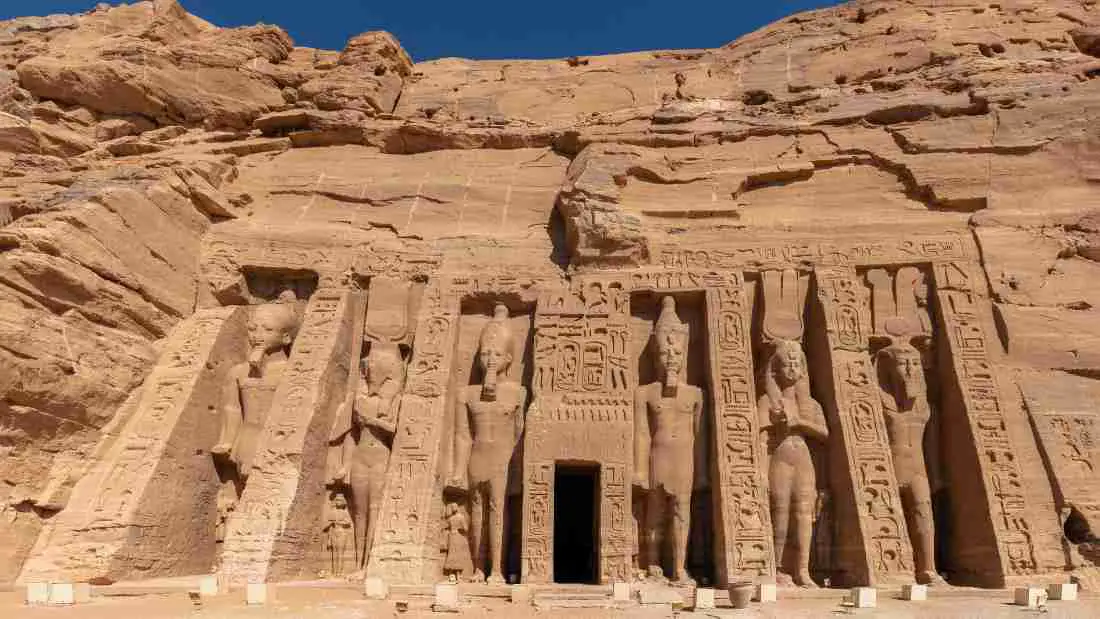
A Solar Phenomenon
One of the most fascinating aspects of the Abu Simbel temples is their alignment with the sun.
The ancients engineered the Great Temple such that twice a year, on February 22 and October 22, the sun’s rays penetrate the temple to illuminate the statues in the inner sanctuary, leaving only the statue of Ptah, the god of darkness, in shadow.
This solar phenomenon coincides with what are believed to be Ramses II’s birthday and coronation day, respectively.
The Relocation of Abu Simbel
In a remarkable feat of modern engineering, the entire complex was relocated in the 1960s to save it from being submerged under Lake Nasser due to the construction of the Aswan High Dam.
The temples were painstakingly cut into large blocks, moved piece by piece, and reassembled in a new location 65 meters higher and 200 meters back from the river.
This successful operation, led by UNESCO, ensured the preservation of this invaluable piece of human history.
Legacy of the Temple of Abu Simbel
The enduring allure of the Temple of Abu Simbel goes beyond its architectural brilliance.
It offers a glimpse into the life and values of Ramses II, his devotion to the gods, his love for his queen, and his desire for immortality.
Today, thousands of visitors flock to witness the grandeur of these temples and the incredible spectacle of the sun illuminating the inner sanctuary.
The Temple of Abu Simbel continues to stand as a symbol of the ancient Egyptians’ ingenuity and their deep reverence for their gods and rulers.
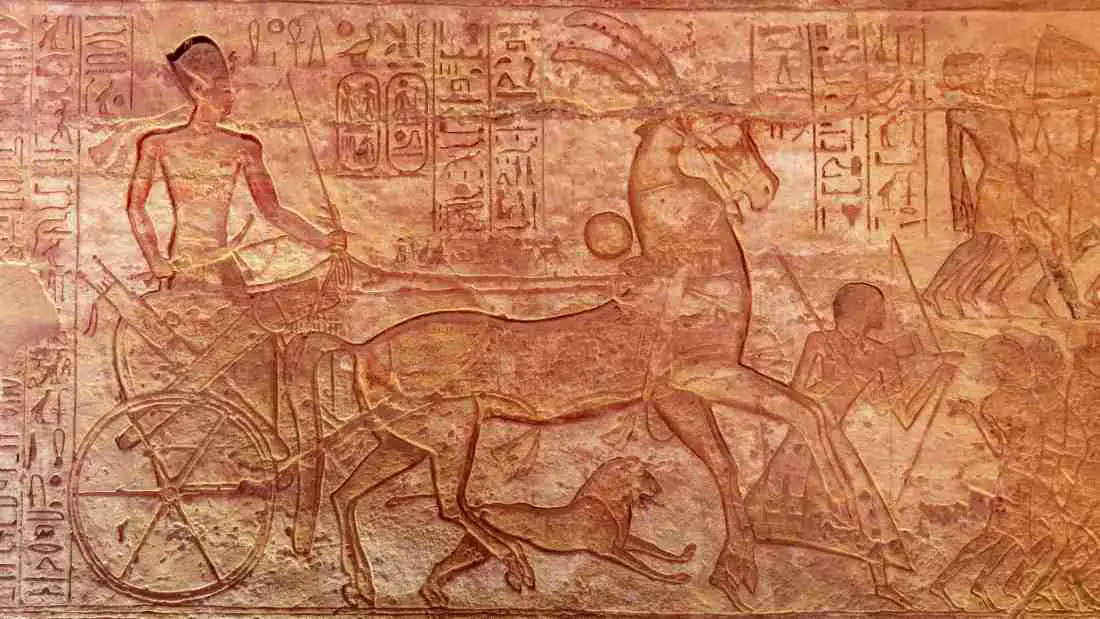
The Ancient Egyptian Temples of Hathor: A Homage to Love, Music, and Joy
Situated in Dendera, on the west bank of the Nile, the Temple of Hathor stands as a tribute to one of the most beloved deities of ancient Egypt.
Hathor, the goddess of love, joy, beauty, music, and motherhood, was revered across Egypt, and her temple at Dendera is one of the best-preserved temples from the Greco-Roman period.
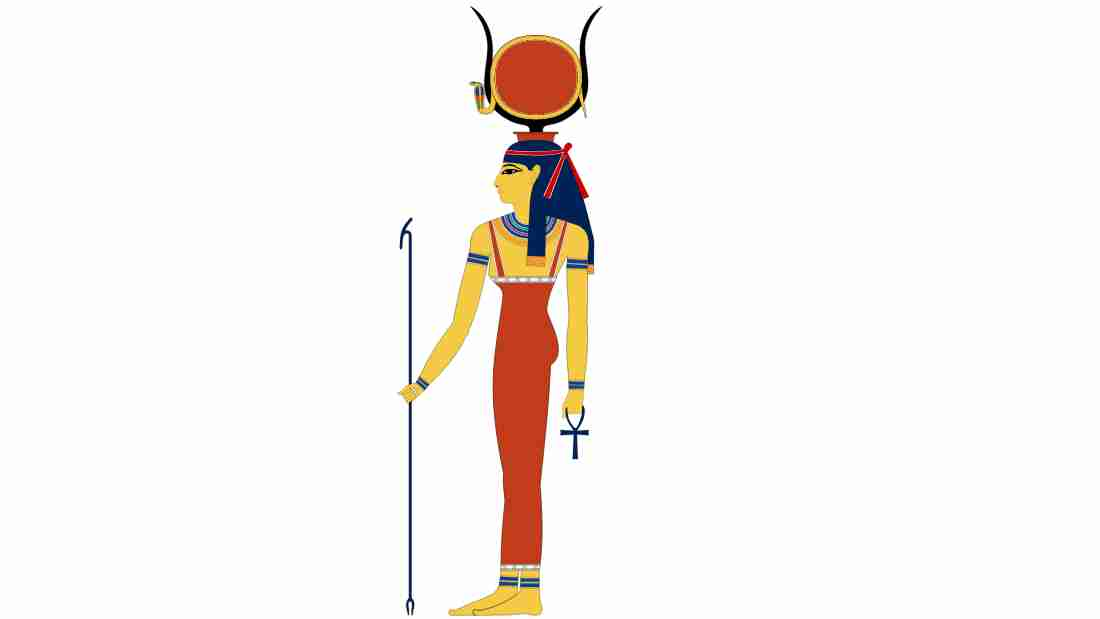
Architectural Grandeur
The Temple of Hathor is an architectural marvel that exhibits the classic elements of Egyptian temple design, including massive gateways, tall columns adorned with hieroglyphics, and a dark inner sanctuary.
The temple complex includes the main temple, several smaller temples, a sacred lake, and a birth house (mammisi) built to celebrate the birth of the son of Hathor and Horus.
One of the most striking features of the Temple of Hathor is its grand façade, called the hypostyle hall. It features 24 towering columns, each about 15 meters high, supporting a roof decorated with astronomical scenes. Each column is intricately carved with depictions of Hathor in her characteristic form of a woman with cow’s ears.
Celestial Connections
The Temple of Hathor is renowned for its celestial connections.
The astronomical ceiling in the outer hypostyle hall is a beautiful representation of the night sky, featuring images of the goddess Nut, the personification of the sky, swallowing the sun disk and giving birth to it, symbolizing the cycle of day and night.
One of the most intriguing parts of the temple is a small chapel dedicated to Osiris, which contains a depiction of what many believe to be a representation of ancient Egyptian knowledge of the zodiac.
These are some of the earliest known representations of the zodiac in the world.
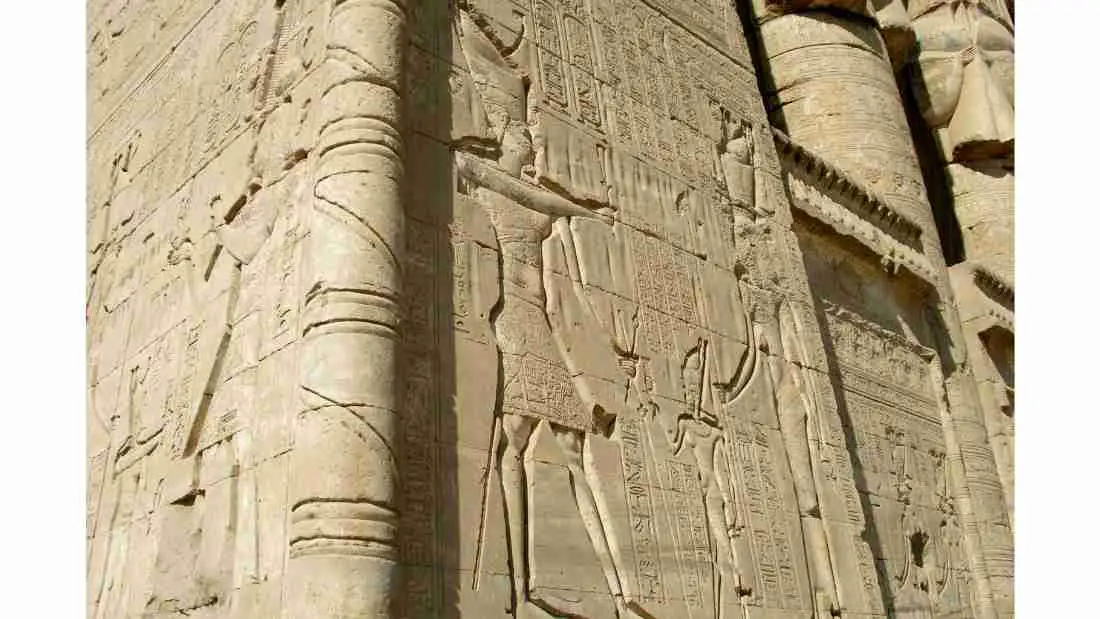
The temple not only served as a place of worship but also hosted the Festival of the Beautiful Meeting, a significant annual celebration where the statue of Hathor was taken on a river journey from Dendera to meet her husband Horus at Edfu. This temple, therefore, was not just a spiritual center, but also a hub of social activities and celebrations.
The Temple of Hathor, with its grandeur and well-preserved artistry, continues to offer invaluable insights into the religious practices, societal structure, and cultural celebrations of the ancient Egyptian civilization.
The Temples of Horus in Edfu: A Testament to Ancient Egyptian Craftsmanship
Situated between Aswan and Luxor on the west bank of the Nile, the Temple of Horus in Edfu is one of the best-preserved monuments from ancient Egypt.
This impressive edifice is dedicated to Horus, the falcon-headed sky god who was one of the most significant deities in ancient Egyptian mythology.
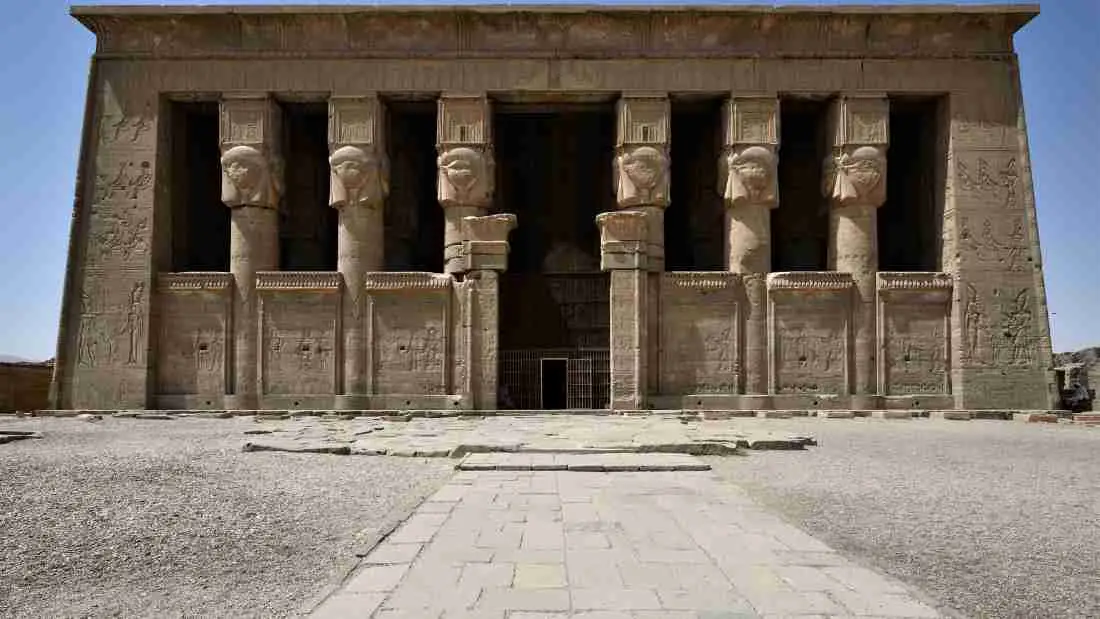
Architectural Splendor
Built between 237 BC and 57 BC during the Ptolemaic Kingdom, the Temple of Horus stands as a magnificent example of traditional pharaonic architecture.
Its grand entrance, flanked by two black granite statues of Horus, leads to a courtyard and a large colonnaded hall adorned with detailed carvings and hieroglyphics.
The temple complex spans nearly 40,000 square meters and includes an offering hall, a sanctuary, and several chambers used for various rituals.
The innermost part of the temple houses a statue of Horus, which was considered the living image of the god.
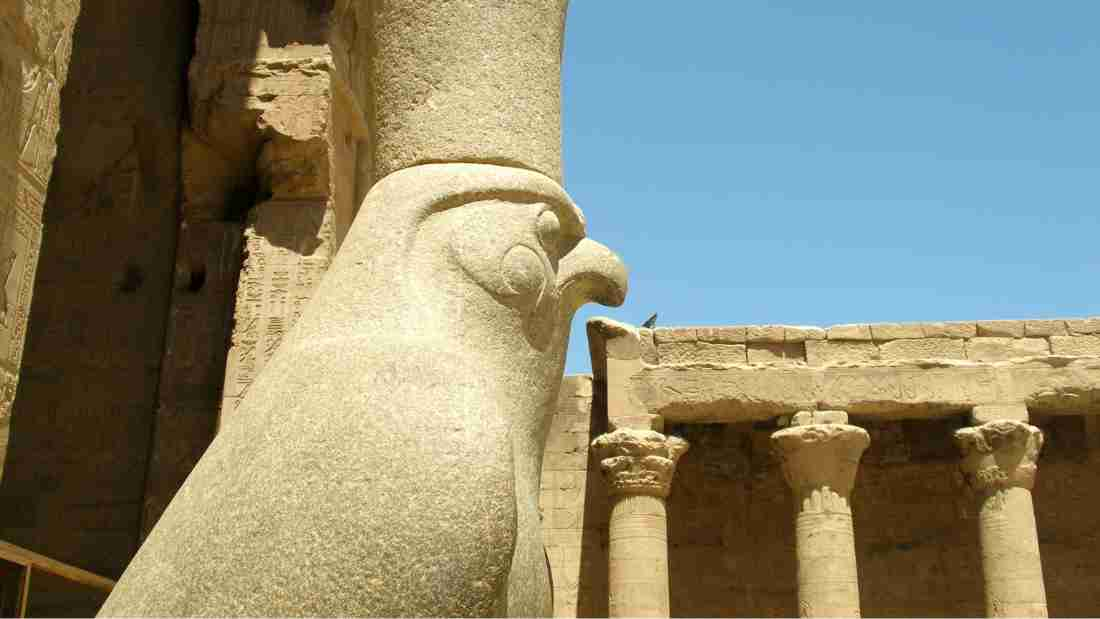
Rich Mythological References
The Temple of Horus is renowned for its inscriptions that depict the myth of the conflict between Horus and Seth, his uncle, over the throne of Egypt.
This epic battle is a central theme in ancient Egyptian mythology, symbolizing the eternal struggle between order and chaos.
The walls of the Edfu temple provide a comprehensive narrative of this myth, making it a valuable resource for understanding ancient Egyptian religious beliefs.
The Festival of the Beautiful Meeting
One of the most important events associated with the Temple of Horus was the Festival of the Beautiful Meeting.
During this annual festival, a statue of Hathor from her temple in Dendera was brought to Edfu so that she could be reunited with her husband, Horus.
This symbolic meeting was a major event, involving a procession along the Nile and several days of celebration and rituals.
Preserving History and Culture
Today, these ancient Egyptian temples serve as windows into a civilization that has long passed. They provide invaluable insights into the religious practices, societal structure, and daily life in ancient Egypt. Despite thousands of years, their majesty remains undiminished, attracting historians, archaeologists, and tourists from around the world.
Their imposing edifices, intricate carvings, and enduring resilience are a testament to a civilization that, despite its disappearance, continues to captivate us with its mystery and grandeur. As we walk through the colossal pillars and gaze upon the hieroglyphic-covered walls, we are transported back in time, getting a glimpse of the spiritual fervor and architectural prowess of the ancient Egyptians.

Frequently Asked Questions About The Ancient Egyptian Temples
Ancient Egyptian temples were built as houses for the gods. They were places of worship, where rituals were performed to honor the gods and ask for their blessings. These temples also served as centers for religious festivals, community gatherings, and a place for public education.
Some of the most famous ancient Egyptian temples include the Temple of Karnak in Luxor, the Temple of Abu Simbel, the Temple of Hathor in Dendera, and the Temple of Horus in Edfu.
The hieroglyphics found on the walls of the temples often depict tales of the gods, record the deeds of the pharaohs, and provide instructions for various rituals. They serve both a religious and historical purpose, offering insight into the spiritual beliefs and cultural practices of ancient Egypt.
Yes, many of the ancient Egyptian temples are open to the public and serve as major tourist attractions. Visitors can explore the grand halls, view the intricate carvings, and learn about the religious practices and societal structures of ancient Egypt.
Many temples have been preserved through a combination of natural factors and human intervention. In some cases, temples have been relocated to protect them from environmental threats, as with the Temple of Abu Simbel, which was moved to avoid being submerged when the Aswan High Dam was built. Conservation efforts by local authorities and international organizations like UNESCO continue to preserve these historical sites.
For Further Reading
Large Stockpile of Embalming Equipment discovered in Abusir
Mummification: Why did the Ancient Egyptians embalm their dead?
Saba Mahmood – a strong voice in the anthropology of religion and post-colonialism
Unravelling the Mysteries of Ancient Egyptian Symbols of Death – Anthropology Review
The Wrath of Montu – The Mythology of the Egyptian War God
Exploring the Egyptian Middle Kingdom – A Historical Overview
Examining the Rich Hues of Ancient Egyptian Paint
Ancient Egyptian Temples: Spiritual Centers of the Nile Civilization
The Symbolism and Significance of Ancient Egyptian Jewelry
The Pantheon of Ancient Egyptian Gods – A Comprehensive Guide
Temple of Seti I: An Architectural Marvel in the Ancient City of Abydos

